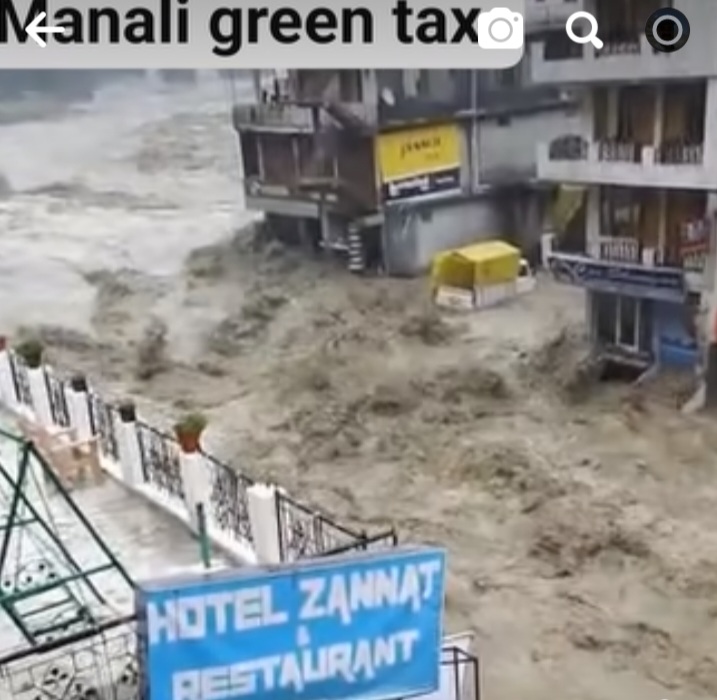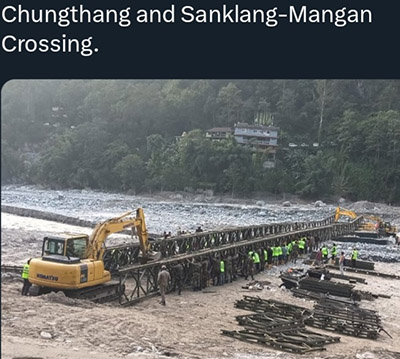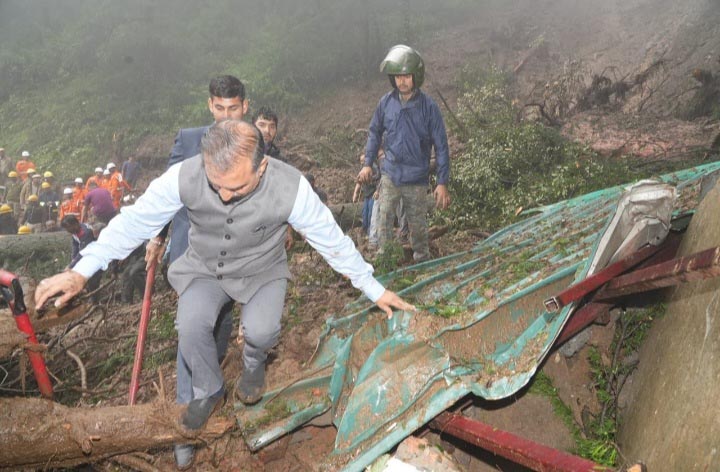SHIMLA/NEW DELHI: NITI Aayog has constituted Himalayan State Regional Council(HSRC) in 2018 for working towards the "sustainable development of the Indian Himalayan Region (IHR), a critical area spread across 11 states and union territories".
Himalayan region faces unique challenges due to its diverse demographic, environmental, and socio-economic realities of the mountains.
In 2018, NITI Aayog established the Himalayan State Regional Council(HSRC) to address these challenges through coordinated efforts across several thematic areas.
In June 2017, NITI Aayog established five Working Groups to create action plans for the Himalayas, focusing on spring revival for water security, sustainable tourism, transformative shifting cultivation, enhancing skills and entrepreneurship, and data-driven decision-making.
The chief secretary of each state was also a member of the HSRC. But there was no meeting of the HSRC and working groups since 2019.

However, there has been a significant lapse in regular meetings and active engagement since 2019, which has led to mounting concerns among stakeholders.
The Integrated Mountain Initiative (IMI) has been vocal about the urgent need for renewed support and action from NITI Aayog, especially given the increasing frequency of natural disasters in Himalayan states like Himachal Pradesh, Uttarakhand, Sikkim, and Ladakh.
IMI President Ramesh Negi said IMI would meet the NITI Aayog in August flagging pending demands of the mountain sates.
Toping the charter of demands include Forest Grants by continuing the present formula on forest grants.
Forest grants were increased from 7.5% in the 14th Finance Commission to 10.5% in the 15th Finance Commission. For the northeastern states, the forest grants were doubled.
This financial support is vital for maintaining and expanding forest cover, which plays a crucial role in environmental stability and biodiversity conservation and water security and other eco-services to the Plains.
Then comes Special Grants for Waterborne Disasters.
Given the region's susceptibility to floods and landslides, there is a pressing need for dedicated funds to manage and mitigate the impacts of waterborne disasters, said Negi, who superannuated as chief secretary, Arunachal Pradesh having a vast experience in serving Himalayan region
These grants would help in building resilient infrastructure and effective disaster response mechanisms.
Third is Insurance Models for Local Bodies.

Developing insurance models to secure the assets of local bodies is essential.
Such models, funded by state and Finance Commission grants, would provide a safety net for local communities, ensuring quicker recovery and rebuilding after disasters.
Himalayan states have been pressing for a Dedicated Ministry for the Himalayan Region.
This ministry would streamline efforts and resources, ensuring targeted and efficient development initiatives tailored to the region's specific needs.
But the Central government has not responded to this "just" demand so far.
These demands highlight the need for policies that consider the unique geographical and ecological characteristics of the Himalayan region.
These are not demands of NGOs but reflects the hopes and aspirations of the people of the mountain states, where they pay more than three times for construction, transportation and maintenance as compared with the cost in the plains.
The implications of not addressing these demands are significant.
Without sustained financial and logistical support, the Himalayan states risk increased environmental degradation, loss of biodiversity, and heightened vulnerability to natural disasters.
This would not only impact the local population but also the broader ecological balance and water security of the entire country, given the Himalayas' role as a water tower feeding the major rivers that support India's agriculture and drinking water needs, said Negi.
The call for NITI Aayog to resume regular meetings and actively engage with stakeholders is critical.
A responsive and dynamic approach from NITI Aayog would demonstrate a commitment to the voices of the Himalayan people and the sustainable development of the region.
Such efforts would mitigate the perception of step-motherly treatment and ensure that the policies are inclusive, addressing the needs of these ecologically sensitive and strategically important states.
Readers' Comments:
1. Hundreds of crores of CAMPA funds of HP Forest department provisioned in EMP plans of various hydro power and other development projects are lying unspent with Govt of India. Govt and non govt organizations can collaborate to draw plans for utilizing these funds in accordance with CAMPA operational guidelines and procedures- Manoj Kumar(Hydropower Expert, Shimla) .
2. *It is crucial that NITI Aayog looks at the sustainable development of IHR in totality as it impacts large part of the country which are highly dependent on this Region for their power, irrigation , and water resources- Naveen Kapur,








